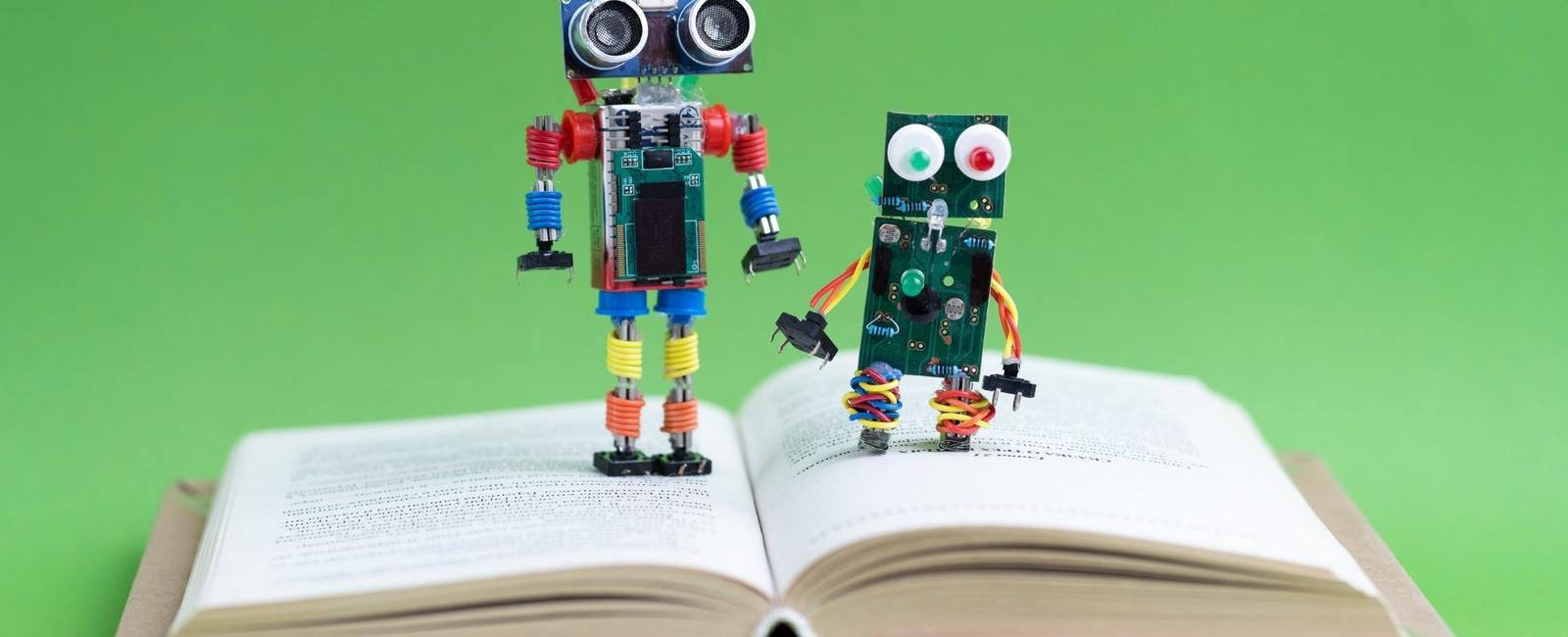AI PREDICTIONS FOR 2024

Artificial Intelligence, or AI, has come a long way over the past few years. As we get closer to 2024, it seems like AI will keep advancing pretty quickly. We’re headed towards a future where AI isn’t just something companies use behind the scenes but where it’ll be part of our everyday lives.
There’s some interesting stuff happening with AI trends that gives us a hint of what’s to come. One big thing is this Multimodal AI, which is focused on blending different types of data seamlessly. So instead of AI just looking at text or numbers, Multimodal AI can understand images, audio video, and more. It opens up possibilities for AI to interact with us in natural ways. Another development is Agentic AI, which is about making systems that can act independently to accomplish goals. This could lead to AI assistants who understand what we tell them and take their initiative within certain limits we set. Kinda scary but also exciting! Overall, AI is gonna reshape industries, change how we use technology and probably impact society in ways we can’t even imagine yet. The trends happening now give us a taste of how AI might become a participant in our lives rather than just a tool.
Below, you will find the different aspects of AI and how they have become inextricably intertwined with our lives.
Multimodal AI: Bridging Human and AI Communication
The emergence of multimodal AI marks a major leap forward in AI’s capabilities. By integrating different data types like language, images, speech, and more, these systems can understand the world more holistically and interact with it more naturally. According to AI experts, multi-modal AI is likely to become standard in the years ahead, and the release of open models like LLava shows the potential here - AI that can fluidly combine diverse data for richer applications.
As Sara Hooker of Cohere For AI notes, AI in 2024 may turn out to be a turning point. She predicts models that converge language, visuals, speech, and more into singular yet powerful AI systems. This convergence promises AI that perceives our human world more comprehensively and interacts with the human realm more seamlessly. She stresses the need for a shift from a Western-centric approach to more inclusive models in AI development.
REAL-WORLD APPLICATIONS
Healthcare is projected to make more use of multimodal AI models to better diagnose patients. The models look at medical images alongside a patient’s history and genes to be more accurate. Stanford University partnered with UST to leverage multimodal AI for learning about reactions to traumatic healthcare events. For that, they’re tapping IoT sensors, audio, images, and video feeds. The much-vaulted approach helps in patient diagnosis and treatment by combining different data types like ultrasound imaging, patient history, and other relevant details.
Multimodal AI is set to make waves in the auto industry these days. It’s helping to streamline all kinds of stuff - managing the supply chain, fielding customer inquiries, verifying IDs, issuing recalls, and submitting paperwork. It takes over a bunch of tedious admin work so people can focus on more important things, and these systems are also enabling carmakers to accelerate production cycles and bake more safety features into vehicles. That’s some next-level stuff that’s going to save lives. So yes, AI is transforming cars in ways we probably can’t even imagine yet.
Agentic AI: Towards More Autonomous Systems
The shift to Agentic AI, where AI agents can act independently and take initiative, marks a big change from old-school AI systems. Industry bigwigs think these agents will majorly improve customer experiences in areas like travel and shopping by limiting the need for humans to get involved. The future for Agentic AI holds the promise of agents that can figure out broader intentions so AI systems get more precise and efficient. These upgrades fit into the bigger picture of AI that isn’t just tools anymore but is taking part in business choices and workflow.
REAL-WORLD APPLICATIONS
Amazon’s cashier-less Amazon Go stores are pretty wild. They use a bunch of cameras, sensors, and AI to track what you pick up and charge you automatically when you bounce. It may sound creepy being watched by robots while you shop, but it makes things faster, not having to stop and pay.

Walmart is testing out these robotic store assistants that stalk around the aisles, monitor stock, and help confused customers find stuff. It could get annoying fast if they keep bothering you when you just wanna shop in peace. But maybe they’ll work and make trips to supermarkets more fulfilling and enjoyable. Who knows.
Open-Source AI: Democratization and Accessibility
People are realizing more and more how open-source AI could let anyone use AI technology. By 2024, open-source models might be just as good as commercial ones from big companies. This could make AI a lot more available, especially for companies that need customized solutions. AI industry leaders think new open-source releases from places like Meta and Mistral will help close the gap with commercial models. That would put sophisticated AI into the hands of many more people and organizations.
REAL-WORLD APPLICATIONS
Tools like TensorFlow from Google already make AI pretty easy to get into and h2o.ai also has open-source tools that let non-experts start building AI systems. So, open-source AI cuts the cost and time needed to start using AI by letting developers reuse and collaborate.
Projects like Stable Diffusion and AutoGPT attracted thousands of first-timers to help build them. And open source models from Meta and Mistral are giving smaller groups access to really advanced AI capabilities. By working together, open-source AI makes sophisticated technologies available to people with all levels of resources.
On-Device AI: Empowering Personalized Experiences
The recent interest in on-device AI comes from people and companies wanting more privacy and customization. As experts see it, personal gadgets like phones and laptops are gonna be big deals for multimodal AI stuff, changing how we use technology. The switch is a path to open up AI impact for regular people and businesses. It brings high-end private experiences without needing cloud services as much.
REAL-WORLD APPLICATIONS
Qualcomm’s pushing the envelope for baking artificial intelligence straight into our gadgets. They want to custom-tailor your smartphone and laptop to fit you like a glove based on how you tap and swipe. Their CEO Cristiano Amon took the stage at CES this year all amped up about on-device AI and how it could be a total game-changer. He went on about how it could make using your phone feel like you’ve got your assistant tuning everything to match your style.
The tech behind this is Snapdragon, Qualcomm’s pride and joy. It’s supposed to pump some serious smarts not just into phones but laptops, VR goggles, smart cars - you name it. The idea is that one day soon this AI will be smart enough to get to know users while living on their device.
AI-Integrated Computing: A New Era in Personal Computing
People across the world are seeing big steps in AI-linked computing, especially with computers. Forecasts say artificial intelligence future gains will make people swap their old laptops and PCs for newer ones and firms like AMD and Intel are leading the way by making chips with AI abilities, pointing to a future full of more AI-focused computing. This shift may spur PC buys and bring in new, better user experiences, and it may dramatically change how everyday people and businesses use computers.

REAL-WORLD APPLICATIONS
A couple of decent chatbots are Tech Support Advisor by OpenAI, which tackles all sorts of tech issues people run into, and Social Media Guru, which helps to write good captions for your Instagram pics. Tech Support Advisor can walk you through fixing your laptop or smartphone or give tips on avoiding hackers and stuff. Social Media Guru looks at the photo you want to post and writes a description that’ll work great on different sites like Facebook and Instagram.
Generative AI’s Second Wave: The Rise of AI-Generated Video
The world of AI that can generate stuff from text is exploding lately in a big way. They’ve moved from just making images to now even being able to put together little videos. This takes all the cool things AI can do with images and makes videos, too, which could change how people make movies or commercials. But it’s still early, so the videos aren’t perfect yet. And, still, new AI tools like Runways Gen-2 open up possibilities for artists or whoever to create in new ways. Of course, with great power comes trouble, too - bad actors could abuse it, and it takes a ton of computing power. But overall, this tech is a game-changer that’s just getting started.
Conclusion
Artificial intelligence technologies seem to be getting more widespread adoption across different industries these days. As AI systems advance faster and expand what they can do, it looks like they’ll keep spreading into new areas in the coming years. This could let AI make bigger impacts, whether helping to analyze medical records or automating factory jobs.
But with the excitement also comes worries that we need to put good guidelines in place. If not, AI might end up causing unfairness or harm. As we go forward, we’ll likely see amazing new AI uses, along with serious debates over regulation and ethics for how to steer the technology responsibly.


